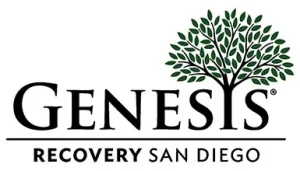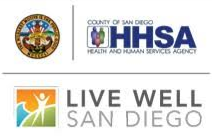Background
Prescription drug abuse in Colorado has been skyrocketing and has laid the groundwork for other heavy prescription drug abuse. In 2016, opioid overdose deaths in Colorado fell to 442, a 6 percent decrease from 2015. Furthermore, in 2015, prescription painkillers oxycodone and hydrocodone killed 259 Coloradans, but that significantly decreased in 2016 to 188. However, despite the success of the efforts aimed at curbing prescription opioid abuse, an unforeseen consequence has arisen, as heroin abuse and overdose deaths are reaching all-time highs. The increased demand for heroin has lead to a huge influx of the drug into Colorado, most of it coming from Mexico. From 2011 to 2015, the number of heroin seizures in Colorado increased 2035 percent, while the amount of heroin seized increased by 1562 percent.
Statistics
According to the University of Colorado Skaggs School of Pharmacy, more than 255,000 Colorado residents over the age of 12 misuse prescription medications every year, or 1 out of every 16 people in the state. The Colorado Department of Public Health and Environment (CDPHE) released statistics that show at least one Coloradan dies every day due to a fatal prescription drug overdose. Since 2000, 10,544 Colorado residents have died from overdose.
The three main types of medications with high abuse potential are opioid painkillers, benzodiazepine tranquilizers, and ADHD stimulants.
From 2013 to 2017, doctors wrote more than 36 million prescriptions for Colorado residents, with 56 percent of those being opioid painkillers. In a little more than four years, that equates to over 20 million opioid prescriptions dispensed in Colorado. Based on the state’s population, that is the equivalent of 3 out of 4 residents having their own personal supply of opioids. One study showed that 91 percent of patients in the United States who have suffered nonfatal opioid overdose continue to be prescribed opioids.
While media coverage is largely focused on the opioid epidemic, it is easy to forget that 30 percent of prescription medication overdoses are due to benzodiazepines. Between 2013 and 2017, doctors wrote nearly 8.7 million benzodiazepine prescriptions for Colorado residents. Annually, about 800 Coloradans are hospitalized due to benzodiazepines. Moreover, more Colorado residents go to the emergency room each year due to benzodiazepines than for prescription opioids, heroin, or cocaine.
Prescription stimulants are also highly addictive. Nearly 9 out of 10 stimulant medication users experience withdrawal symptoms within the first day of attempting to quit. Stimulants are extremely popular among college students, who take them as study aids. From 2013 to 2017, doctors wrote more than 3.6 million stimulant prescriptions in Colorado.
In Recent News
The CDPHE has indicated that certain counties have higher rates of prescription drug overdose, including Chaffee, Clear Creek, Las Animas, Otero, and Teller counties. Hospitals and clinics across southwest Colorado are reducing prescriptions for opioids such as codeine and oxycodone. Opioid abuse is reportedly one of the biggest health problems facing this region of Colorado, along with diabetes and suicide. Patients are now receiving shorter doses or alternative medications for opioid addiction treatment.
At the start of 2018, the Colorado Health Foundation invested more than $1.5 million to support Colorado’s efforts to fight substance abuse. The grant supports the Colorado Consortium for Prescription Drug Abuse Prevention and aims to reduce the misuse and abuse of prescription drugs in Colorado by implementing new policies, programs, and partnerships throughout the state. In a partnership with CDPHE, they have begun conducting a series of pilot projects to make the Prescription Drug Monitoring Program easier to use and access by providers and prescribers.
How to Help Yourself and Your Loved Ones
There are several steps that you can take to protect yourself and those you care about from the dangers of prescription medication abuse. It starts with being honest with your doctor about any personal or family history of substance use, as well as any other medications, supplements, or vitamins you are taking. This may even require asking your doctor if there are alternatives to potentially addictive medications. It is also important to never share medications, always properly store them, and dispose of any excess, unwanted, or expired medications properly. Drug take-back locations provide a safe way to do so, with at least one permanent collection location in every Colorado county. All locations accept prescribed controlled substances and can be found at law enforcement agencies, pharmacies, hospitals, and clinics.
Learning the warning signs of prescription drug abuse is also imperative for early identification and prevention. Signs and symptoms of prescription drug use include constipation, nausea, euphoria, slowed breathing, drowsiness, confusion, and poor coordination with opioid painkillers; poor concentration, slurred speech, dizziness, problems with memory, and unsteady walking with sedatives; and reduced appetite, insomnia, anxiety, paranoia, and agitation with stimulants. If prescription drug abuse is impacting your life, don’t face the problem alone. Specialized professional treatment is available. Timely intervention and evidence-based recovery strategies make it possible to step back from addiction before it is too late.

